
Tiwai Point lies at the entrance to Bluff Harbour on the southern coast of the South Island of New Zealand. A spit which extends from the western end of the Awarua Plain, it lies between Awarua Bay to the north and Foveaux Strait to the south. It is known for the Tiwai Point Aluminium Smelter, one of the largest industrial facilities in New Zealand.

The Ōreti River is one of the main rivers of Southland, New Zealand, and is 170 kilometres (110 mi) long. The river has been identified as an Important Bird Area by BirdLife International because, for much of its length, it supports breeding colonies of black-billed gulls.

Asaphodes is a genus of moths in the family Geometridae erected by Edward Meyrick in 1885. This genus is endemic to New Zealand and species within this genus are found throughout New Zealand including the North, South and Stewart / Rakiura Islands.
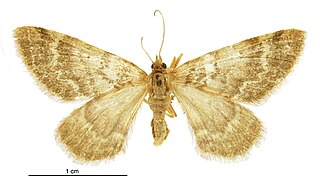
Asaphodes aphelias is a species of moth in the family Geometridae. It is endemic to New Zealand and has been observed in Fiordland. This species inhabits damp native scrub and has been observed in upland wetlands at altitudes of between 800 and 1100 m. Adults are on the wing in February but the female of this species is unusual as it has narrow fore and hind wings.

Asaphodes cataphracta is a moth in the family Geometridae. It is endemic to New Zealand and is found in the South Island. This species prefers grassy or tussock covered mountain side slopes as habitat. The adults of this species are on the wing from December until March. The larvae of A. cataphracta is known to consume native mountain buttercups (Ranunculaceae).

Asaphodes imperfecta is a moth in the family Geometridae. It is endemic to New Zealand and is found in the southern part of the South Island. The species inhabits low lying swampy native forest. The host plants of the larvae of this species is unknown. The adults are on the wing in December and January. It is classified as critically endangered by the Department of Conservation.

Asaphodes obarata is a moth in the family Geometridae. It is endemic to New Zealand and has been collected in both the North and South Islands. It seems to inhabit the margins of native forest and also frequents plains, with an affinity for gorse hedges. The host plants of the larvae of this species are unknown. The adults are on the wing in December and January. It is classified as critically endangered by the Department of Conservation. There has been a contraction of range of A. obarata with it now being regarded as locally extinct in both Dunedin and Invercargill.
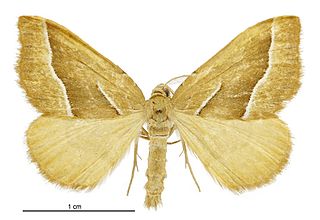
Asaphodes stinaria is a moth in the family Geometridae. It is endemic to New Zealand and has previously been observed in both the North and South Islands. The range of this species has contracted and it has recently only been located in Westland, Otago and Southland. This species inhabits wetlands, tussock country, and in grassy openings in native forest. The larval host species has been hypothesised as being 'hairy' Ranunculus species however as at 2000 this hasn't been confirmed. It is classified as Nationally Vulnerable by the Department of Conservation. There has been considerable reductions of the range of this species with it possibly becoming extinct in eastern parts of New Zealand.

Orocrambus sophistes is a moth in the family Crambidae. This species is endemic to New Zealand and has been observed in South Island at the Mackenzie Basin, Central Otago and Otago Lakes areas. This moth is a dryland specialist and inhabits short tussock grasslands. The larval host species is Festuca novae-zelandiae. The adults of this species have been observed from mid January to April with the female being flightless. The adult male is attracted to light. This species has been classified as Nationally Vulnerable by the Department of Conservation.

Asaphodes clarata is a species of moth in the family Geometridae. This species is endemic to New Zealand and has been found on the North and South Islands. The species inhabits open grassy areas, including tussock grasslands, in montane habitat. The larvae feed on the leaves of Ranunculus species. The adult moths are day flying and are on the wing from December to February and have been shown to pollinate Celmisia laricifolia and Hebe pinguifolia.

Asaphodes dionysias is a species of moth in the family Geometridae. This species is endemic to New Zealand and is only known from mountainous areas in Central Otago. It lives in open grassy mountainous habitat at altitudes up to 1750 m. It is also known to live in wetland habitat. The larvae of this species feed on native herbs. The adults of this species are on the wing in January and February. The adult female of the species has reduced wing size in comparison to the male.
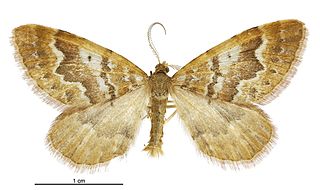
Asaphodes exoriens is a species of moth in the family Geometridae. This species is endemic to New Zealand and has been found in Central Otago. This is an alpine species and frequents open grassy habitat. They can also be found in upland wetland habitat at altitudes between 800 and 1100 m. Adults are on the wing in March.
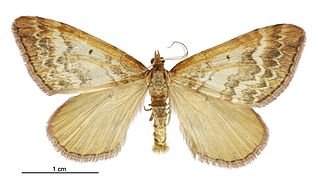
Asaphodes helias is a species of moth in the family Geometridae. It is endemic to New Zealand. It has been found in the middle and southern parts of the South Island. This species frequents tussock and scrubby habitat. The host plants of the larvae of this species include Cardamine and Ranunculus species. They have also been witnessed feeding on exotic buttercup species in the genus Bellis. Adults are on the wing in January and February.

Asaphodes nephelias is a moth in the family Geometridae. It is endemic to New Zealand and has been observed in the South Island. The preferred habitat of this species is alpine tussock grasslands above native forest and in wetlands. The adults of this species are on the wing from January to March and are day flying. The female has brachypterous wings.
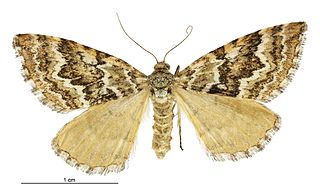
Asaphodes stephanitis is a species of moth in the family Geometridae. This species is endemic to New Zealand and has been observed in the southern parts of the South Island. this species inhabits coastal sand hills and grassland and is regarded as being rare. Adults are on the wing from January to March.
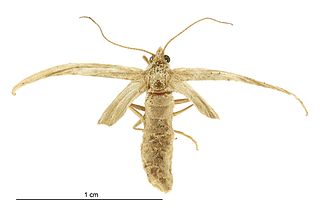
Asaphodes oraria is a species of moth in the family Geometridae. This species is endemic to New Zealand and has been observed in the southern South Island and on Stewart Island / Rakiura. The male is pale yellow coloured and the female has severely reduced wings and is flightless. The habitat of this species is tussock grasslands on coastal sand dunes and in the mountains at elevations of approximately 4,000 ft. The larvae have adapted to feeding on exotic lawn daisy species in the genus Bellis. The adults of this species are on the wing from November to April.

Asaphodes philpotti is a moth in the family Geometridae. It is endemic to New Zealand and has been found in the South Island as well as one observation in Wainuiomata in the North Island. This species inhabits native forest and larvae are hosted by species in the genera Hydrocotyle and Cardamine.

Asaphodes prasinias is a moth in the family Geometridae. It is endemic to New Zealand and has been found on both the North and South Islands. This species inhabits native forest including beech forest and subalpine scrub. The range of this species has reduced as this species is regarded as being locally extinct in the previously inhabited open non-forest habitats around Invercargill. Adults are on the wing from November to January.

Asaphodes recta is a moth in the family Geometridae. It is endemic to New Zealand and is found in the southern parts of the South Island. The preferred habitat of this species is open tussock grassland. The adults are on the wing in February and March. Larvae of this species have been reared on species in the genera Ranunculus and Bellis.

Asaphodes sericodes is a moth in the family Geometridae. It is endemic to New Zealand and has been observed in the southern parts of the South Island. This species inhabits open tussock grasslands in subalpine scrub or wetlands. The female of the species is likely semi-apterous and is flightless. The adult males are on the wing in January.






















